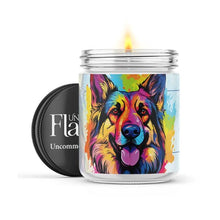How To Make Your Dog Vomit

Most pet parents have shared in the feeling of panic as they watched their dog swallow something harmful or even deadly. In times like this, it’s important to know how to make your dog vomit, and when you should avoid making your dog throw up.
Before you try to make your dog throw up or search Dr. Google for advice, save yourself some stress, and possibly your dog’s life, and call your vet, the Pet Poison Helpline, or the ASPCA National Animal Poison Control Center.
Pet poison control centers have experts standing by 24/7, 365 days a year and know what questions to ask and how to best help your dog. If you discover that you do have a true emergency on your hands, they can also provide your vet treatment guidelines and save you precious minutes, and possibly help save your dog’s life.
According to the Pet Poison Helpline, the most common calls they receive are from pet owners whose dogs have eaten:
- Foods, such as grapes, raisons, xylitol, and chocolate.
- Insecticides, including rodent bait stations, insect sprays, and flea and tick treatments.
- Pesticides, lawn and garden products.
- NSAIDS, which are toxic to dogs, and include Motrin, ibuprofen, Aleve, etc.
- Household hazards, such as antifreeze and cleaning supplies.
- Human medications
- Animal medications
- Fertilizers
- Other common calls include plants, lotions, marijuana, illegal drugs, and alcohol.
Symptoms of Pet Poisoning
The symptoms of poisoning in dogs can include lethargy, seizures, drooling, panting, confusion, breathing problems, heart problems, coughing up blood, collapse, vomiting, diarrhea, increase or decrease in urination, yellow or pale gums, blood in stool and more.
How to Make your Dog Vomit
Once you’ve called your vet or one of the help lines and you need to make your dog throw up, the safest product to use is fresh 3% hydrogen peroxide. Never use other home remedies or human vomiting inducers, such as Ipecac syrup.
You’ll be advised not to make your dog vomit if they’ve eaten harsh chemicals such as bleach, cleaning products, or other caustic chemicals that can cause damage to the esophagus and stomach or petroleum based products.
According to Pet MD, measure 1 ml of 3% hydrogen peroxide for each pound of body weight. The maximum dose is 45 ml for ALL dogs even if they weigh more than 45 pounds.
Using a syringe or turkey baster, put the peroxide in the back of your dog’s mouth and tip back the head until they swallow. If your dog doesn’t vomit within 15 minutes, you can give one more dose of peroxide but by this time, you should already be on your way or have talked to your vet for instructions.
Pet Poison Emergency Phone Numbers
Pet Poison Helpline (855) 764-7661, $59 fee
ASPCA Animal Poison Control, (888) 426-4435, fee may apply
























